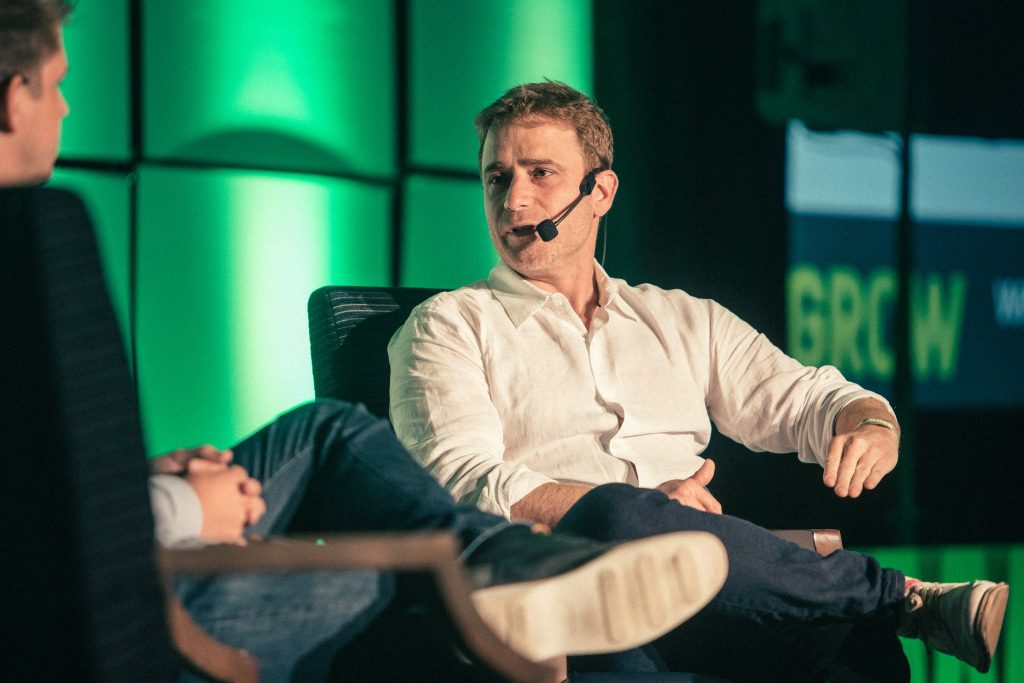“Living in a connected world.”
That was the overriding theme from GROW 2015 in Whistler last week. It resonated through the event. We are connected – in our jealous admiration for the innovators and their innovations; our brilliantly-jaded attention spans that enables us to forget that the magic in our smartphones and wired living spaces is indeed magical (just so we don’t get complacent); our paranoia and neuroses that seem to haunt even the most wildly successful CEOs on the keynote list (Spoiler Alert: If you think I’m being overly dramatic, wait ‘til you get to the bit about how Slack’s hardest-working, billion-dollar CEO seems about to bust a gasket when you ask him about how his life has changed since his startup hit the big-time).
Ultimately, we connect to learn from each other. So what did we learn at the biggest conference on Canada’s west coast for technology, entrepreneurial endeavor, and the VC space?
We Live in a Weird and Wonderful Age of Dumb Things that Act Smart
Just watch Smart, Dumb Things and try to tell me we don’t already live in the world of Harry Potter.
Sure, it’s just a concept video – but this bit, introduced by Mark Rolston of Argo Design in his presentation on The Shapelessness of Things to Come, was a downright effective encapsulation to the sorcery we call technology these days.
Draw a light switch on a post-it, paste it to the wall and tap it to turn the lights on and off; turn your soft drink can next to your dinner plate into a smartphone or TV remote; turn ordinary objects into smart things that make your life easier. This stuff might not exist today – but who doesn’t think it couldn’t be put together in a week, or a few months at the outside, if someone wants it? Invisible, cost-effective tech is making it possible right now.
In the VC World, Winter is Coming (or Maybe It’s Already Here)
The markets are in free fall today, from China to New York. When GROW conference organizer Debbie Landa warned at the kickoff that a correction was coming to the tech sector, she unfortunately left out the important word, “Monday.” As the overall stock market panics, is this the moment where a bonkers tech funding ecosystem finally gets reigned in?
https://twitter.com/Jason/status/636212598959009792
The VCs on hand were all pretty much on board with the View from the Valley session from Charles Hudson of SoftTech VC. There’s a lot more competition in the VC area now and firms have two ways of competing: demanding more from the companies they’re investing in, or investing more in them in the early stage, Hudson explained. “I don’t even know what pre-seed means – that’s what I thought the seed round is for – but it’s happening,” he said, pointing out that seed rounds have tripled or quadrupled from an average $1 million investment of a few years back.
Bigger valuations and investment for startups has meant that more tech companies are delaying or forgoing IPOs – perhaps putting them in a better position to weather a market storm, but also making it harder for VCs to get what they want down the road.
“I don’t even know what pre-seed means – that’s what I thought the seed round is for – but it’s happening.”
In any case, “Winter is Coming” for VCs and they have to plan for that in their investments, noted Kara Nortman of L.A.’s Upfront Ventures. Nortman explained how this market has made things more complicated for both sides: “a lot of companies do themselves a disservice by raising too much money too quickly, without providing the value.”
As an entrepreneur, it can seem like you never have enough money to feel safe, but higher funding for tech companies creates bigger expectations as well on getting a return. “As VCs, we worry about how that money is spent.”
To give an idea of the scale of the situation, in 2014 there were 230 IPO-sized private funds, but 20 IPOs, noted Redpoint Ventures VC Tomasz Tunguz. “There’s a huge overdraft. You’re going to see some spectacular explosions. There’s also going to be a mid-range of companies that just bumble along. They’ve raised so much money that they can’t get another round, but they just drift.”
Get Your Priorities Straight (or Fail)
“How do you build a billion dollar company and live comfortably in chaos?” That was the million (rather, billion) dollar question of a panel including some of the top business minds from well-known unicorn companies, including Atlee Clark from Shopify, Michelle Zatlyn of Cloudflare, and Linda Kozlowski of Evernote. It’s a hard slog for anyone who’s struggled managing their own projects in or outside the office – much less between departments at a fast-growing startup. How do the pros do it?
“Let’s say you’ve got a conflict over priorities between engineering and marketing,” Zatlyn explained. “You don’t want to be in a situation where these teams are going back and forth expecting you to make the call. People need to figure out their options before they even come to you. Encourage that dialogue between them, so you don’t have to be mom or dad. Fostering that is a cultural value, where you have the give and take in prioritization. It becomes part of your flow.”
What about responding to external priorities, from customers? When you’re small, you’ve got to be careful what you say yes to, because it can kill you, Zatlyn added. “Sometimes, you have to tell that big customer, no, not now – but we can offer you what you want in a year. And every time we have that conversation, they’re signed up in a year.”
Always prioritize something that’s hurting the user experience, noted Kozlowski. That’s in contrast to the feature set, which is something you can and should think longer about. “For instance, with task management, everyone’s definition is different – and we don’t want to make the product bulky or hard to use. We need to focus on the things that are going to materially affect the customer experience.”

Even Tech Cowboys Get the Blues
The story of Slack has been told many times before CEO Stewart Butterfield took the stage to do a Q&A representing the Canadian tech company that has rocketed to a $2.8 billion valuation. Slack started out as a game development company, funded to the tune of $17.5 million – and it failed, hard. The popular team communication software that we love today came out of the development process, though – and ultimately, it did so at the right time. Still, some things do keep Butterfield up at night – and the biggest thing is ‘people’.
“We were at 80 people at Christmas time and we’re triple that, now,” Butterfield said. “If you have two people on a team and want to add a third, you’ve got to get them up to speed with processes and documentation and all the rest of it – and you’re doing that while at the same time getting ready to hire employee number four. Now look at our speed of growth. It’s hard to judge your capacity when you’re growing fast and it’s easy to imagine the ways that the wheels can come off. One bad executive hire can really be a significant setback.”
In fairness, Butterfield wasn’t a downer all the way through his conversation with the CEO of Shyp, Kevin Gibbon. But Butterfield did reveal the comically gloomy side of entrepreneurship near the end. Someone in the crowd asked him how it is different for him now that is company has such an astronomically high valuation.
His answer?
“I remember what it was like having to shut down the game startup and lay off 38 people who had moved out here to work for us,” he began. “It weighs so heavily. I remember, in the weeks before that, I couldn’t sleep many nights. I realized it was never going to be a business that could justify $17.5 million. I would cry. It was horrible.
“And now? It’s even more fucking stressful! The expectations are so high. The people who work for you are even more hopeful about the future. There’s so much pressure. It’s worse!”
Stay connected out there, folks.
All GROW images courtesy the wonderfully talented Kris Krüg.


